Getting Around, Istanbul Travel, Transport and Car Rental
(Istanbul, Marmara, Turkey)
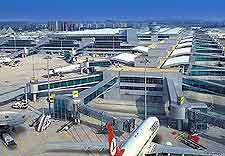
The best way to travel around Istanbul's historic centre is on foot, wandering past city squares and along winding alleyways. Public transportation is best for longer treks across town, and visitors will find the underground metro combined with the tramway and public bus system to be a satisfactory means of transport.
Those travelling to Istanbul may arrive by air, train or coach. It's even possible to arrive by hire car via the Trans European Motorway. However, driving within the city is not advisable as conditions are quite hectic. On the other hand, a rental car is convenient for countryside excursions.
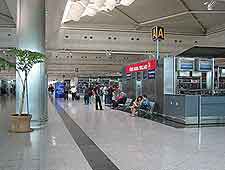
Ataturk International Airport (IST) / Arriving by Air
Address: 34149 Yesilköy, Istanbul, Turkey, TR
Tel: +90 212 465 5555
Ataturk International Airport (previously known as Yesilköy Airport) is situated on the European side of the Bosphorus, roughly 24 km / 15 miles west of Istanbul city centre. This dual-terminal facility ushers more than 37 million passengers annually to cities across Europe,
Asia, the Middle East and
North America. An airport shuttle departs twice an hour for the city centre, and even travels onwards to the opposite side of the Bosphorus. Public bus transport is less expensive, although is considerably slower.
Ataturk International Airport (IST) Guide
Sabiha Gokcen International Airport (SAW) / Arriving by Air
Address: Yönetim Binasi Pendik 34912, Istanbul, Turkey, TR
Tel: +90 216 585 5090
Sabiha Gokcen International Airport is the city's number two airport and came into being in 2001, when Ataturk Airport was struggling to cope with ever increasing passenger numbers. Located on the Asian side of the city, this busy facility sees around four million travellers annually and connects global destinations all around the world. Pegasus Airlines flies to many domestic Turkish cities, such as
Ankara,
Antalya,
Bodrum, Dalaman, Erzurum and
Izmir.
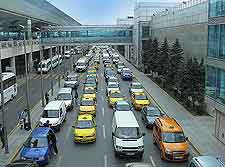
Car Rental
A number of car rental agencies have desks in the airport, though visitors will find Istanbul to be a challenging driving environment. The E-90, E-80 and Trans European Motorway all access the city. Be advised that traffic is intense at all hours and parking is extremely difficult to find. Turkey has one of the highest accident rates in the world.
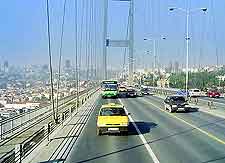
Buses and Coaches
Several intercity coaches provide transportation between Istanbul and other major Turkish cities. Long-haul buses disembark at the Esenler bus station, which is located about 6 miles / 10 km from the city centre. Those travelling by bus from elsewhere in Europe can utilise Eurolines to arrive in Turkey, at which point they must transfer to a domestic carrier.
Transportation around the city itself is possible onboard public (multicoloured) IETT buses or private (green) buses. The Akbil Transit Pass is a good option, as it covers transit on both varieties. For sightseeing, the T4 tourist bus travels back and forth between Taksim Square and Sultanahmet neighbourhood.
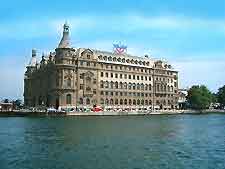
Trains
Trains from across Europe regularly arrive at Sirkeci Station, found near Sultanahmet. Across the Bosphorus, trains from Asia arrive at Haydarpasa Station. There is also an underground metro operating an extensive travel network of connections on the European side, with plans underway to build a tunnel beneath the Bosphorus and open services to the Anatolian (Asian) side. A tram network operates above ground, providing even more extensive public transport options.
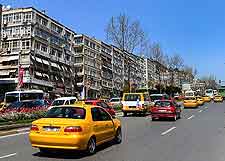
Taxis
Taxis are an inexpensive and painless means of getting around, and passengers are wise to insist on using the meter. Rates increase 50 per cent after hours. 'Dolmus' (shared taxis) travel on fixed routes and have less expensive fares than regular taxis. More expensive (and more comfortable) than public buses, dolmus taxis have eight seats and only depart when full.
 The best way to travel around Istanbul's historic centre is on foot, wandering past city squares and along winding alleyways. Public transportation is best for longer treks across town, and visitors will find the underground metro combined with the tramway and public bus system to be a satisfactory means of transport.
The best way to travel around Istanbul's historic centre is on foot, wandering past city squares and along winding alleyways. Public transportation is best for longer treks across town, and visitors will find the underground metro combined with the tramway and public bus system to be a satisfactory means of transport.





